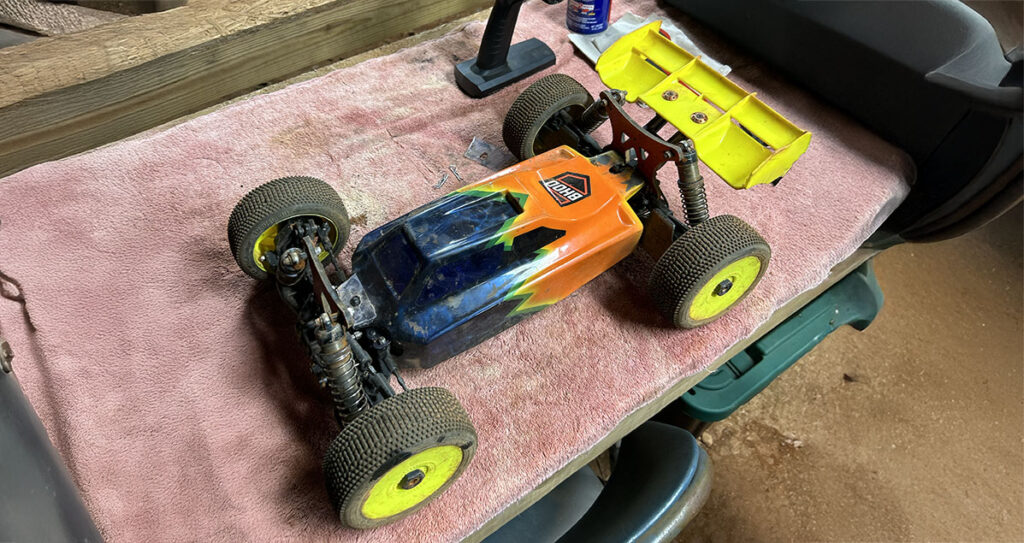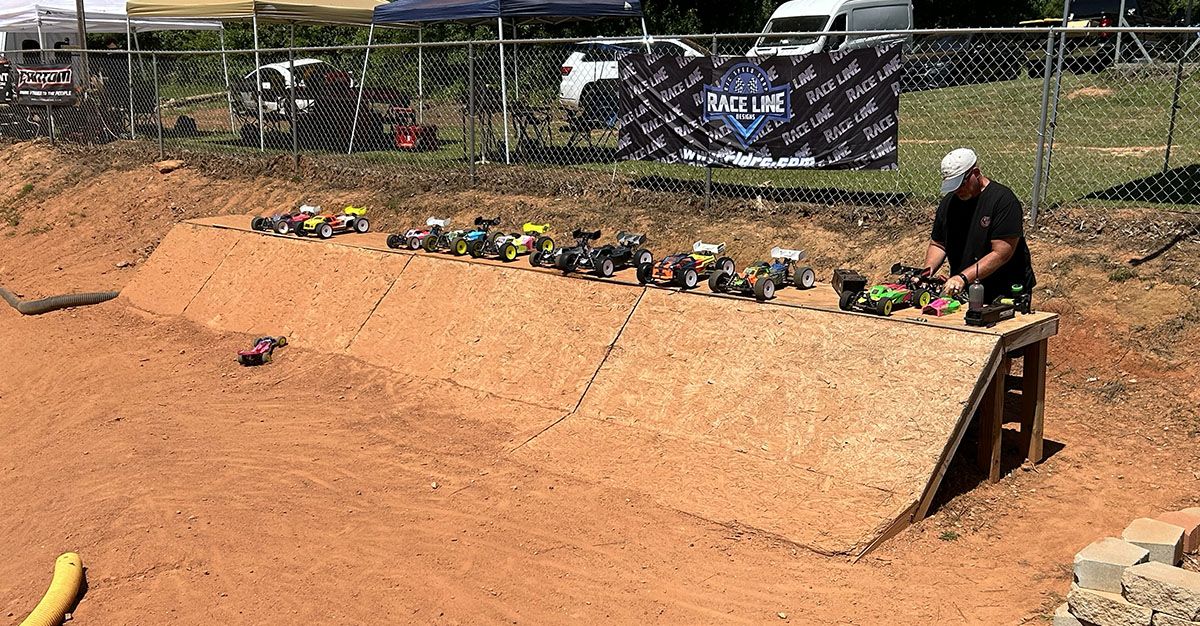How to Get Started in RC Car Racing
So you’ve decided to dive into RC car racing. Congratulations—RC racing is a fun hobby that combines high-speed action, technical skills, and a welcoming community of enthusiasts.
Whether you’re looking for a fun new pastime or hoping to compete, getting into RC car racing can feel overwhelming with all the cars, classes, and setups to choose from. This guide will give you everything you need to make sense of it all, so you can hit the track with confidence and get the most out of your RC racing experience.
What Is RC Car Racing?
RC car racing (short for “radio-controlled”) involves battery- or fuel-powered model cars that are steered remotely, often on specially designed courses. There are two main styles of racing—on-road (for smooth, paved surfaces) and off-road (for dirt, gravel, or carpet tracks). RC car racing has a little something for everyone, from hobbyists looking for weekend fun to those serious about honing their skills in competitive racing leagues.
Electric vs. Nitro: Picking the Right Power Source
For beginners, electric RC cars are typically the way to go. They’re powered by rechargeable batteries, generally easier to maintain, and they’re also quieter, making them suitable for both indoor and outdoor tracks. Electric cars have come a long way, too, with powerful motors and batteries that give you long-lasting speed and impressive performance.
If you crave the realism of a roaring engine and higher speeds, nitro-powered RC cars might be for you. These cars run on a mix of nitro fuel and require a bit more hands-on work, like tuning and cleaning after each race. Nitro cars are often more powerful and faster, but they’re also noisier, so check with your local track on whether nitro cars are permitted before making the investment.
Choosing Your Racing Style: On-Road vs. Off-Road
On-road RC cars are designed for smooth, paved surfaces and tend to have sleek designs and lower ground clearance. They’re faster on flat tracks but aren’t built to handle obstacles or jumps. If you live near an on-road track or prefer speed over versatility, this may be your style.
Off-road RC cars are the all-terrain champions of RC racing. Built with higher ground clearance and rugged tires, they’re perfect for dirt, gravel, grass, or even carpet tracks. They also handle jumps and obstacles better, making them a popular choice for hobbyists and racers who enjoy outdoor courses.
Scale Sizes and Classes: The Basics
RC cars come in various scales, with 1/10 and 1/8 scales being the most common. These scales represent the car’s size relative to a real vehicle. For example, a 1/10 scale RC car is 1/10th the size of the full-sized car it’s modeled after. Larger scales (like 1/8) offer more detail and can often handle rougher terrain, but they may be pricier and require more space to operate.
Once you know your scale, you’ll also want to consider classes. Classes are groupings for different vehicle types, like 2WD buggy or short-course truck. Clubs or tracks usually organize races by these classes to keep competition fair. Stock classes, which use cars with limited modifications, are ideal for new racers as they allow you to focus on skill rather than expensive upgrades.
Finding Local Tracks and Clubs
Local RC tracks are the heart of RC racing culture, offering places to practice, race, and connect with other enthusiasts. To find one near you, search online resources like RC Track Finder, Google Maps, or local RC groups on social media. Visiting a track and meeting other racers is a great way to get advice and see different cars and setups in action.
Joining an RC club gives you access to a community of like-minded racers who can offer advice, tips, and often mentorship. Clubs often hold regular practice sessions and casual race days, perfect for newcomers to get their feet wet without the pressure of formal competition. Many clubs even have equipment or cars you can borrow to test out different styles before investing.

Your First RC Car: Buying the Basics
For newcomers, RTR kits are the best choice. These cars come fully assembled and include most of what you’ll need to start racing right away. While you can still make small adjustments, RTR kits are the least complicated and most budget-friendly way to get started. They typically cost between $150 and $300.
Essential Equipment and Accessories
- Battery Packs and Chargers: For electric cars, having extra battery packs means more time on the track. Quality chargers are also important for maintaining your batteries’ health.
- Basic Tools: A small toolkit with screwdrivers, hex keys, and a wrench will handle most repairs and adjustments.
- Spare Parts: Tires, gears, and suspension parts tend to wear out, so keep a few spares on hand to avoid ending your day early if something breaks.
Practice Makes Perfect: Developing Your Skills
Before you jump into competition, spend some time getting comfortable with handling your RC car. Basic control skills, like managing throttle and steering, are key to mastering turns, handling jumps, and avoiding obstacles. Find a local parking lot or beginner-friendly track and practice at different speeds to improve your precision and control.
While RC racing is about having fun, it’s also important to respect track etiquette. Give faster cars room to pass, avoid collisions, and follow any guidelines set by the track or club. When you’re new, observing other racers can help you pick up on techniques and common courtesy on the track.
Your First Race: Getting Ready for Race Day
Pre-Race Checklist
- Battery Check: Fully charge all battery packs the night before.
- Tighten and Secure: Ensure all nuts, bolts, and screws are tightened.
- Pack the Essentials: Bring spare parts, tools, and a charger so you’re ready for anything.
Many tracks have beginner classes or heats, where you can get used to the format without heavy competition. Start in these, even if it’s just to get used to the flow of racing with others. The most important thing is to focus on consistency rather than winning—good control and clean laps will help you improve faster than trying to hit top speeds.
Car Maintenance and Upgrades
After each race or practice session, make it a habit to clean and inspect your car. Dust and grime can wear down parts over time, especially if you’re racing off-road. Lubricate moving parts, replace worn tires, and check your batteries.
Once you’re more comfortable, you might consider upgrading your car’s motor, suspension, or tires. Upgrades can make your car faster and more durable, but they also require a bit more knowledge to install and maintain. Start with basics like better tires or suspension adjustments before investing in high-performance motors or electronics.
The RC Community: Getting More Involved
The RC racing community is welcoming, and staying connected with fellow racers can help you learn faster and find more racing opportunities. Joining online forums, following social media groups, and even volunteering at local events can deepen your involvement. Larger events, such as regional RC shows or competitions, are great for expanding your network and picking up advanced techniques.
Final Thoughts
RC car racing is an exciting, hands-on hobby that’s as much about skill and strategy as it is about speed. From choosing the right car to preparing for your first race, the world of RC racing offers endless ways to improve and enjoy. Remember to start with the basics, practice regularly, and enjoy the journey. You’ll quickly see why so many RC enthusiasts are hooked—and why, before long, you’ll probably be hooked too.

